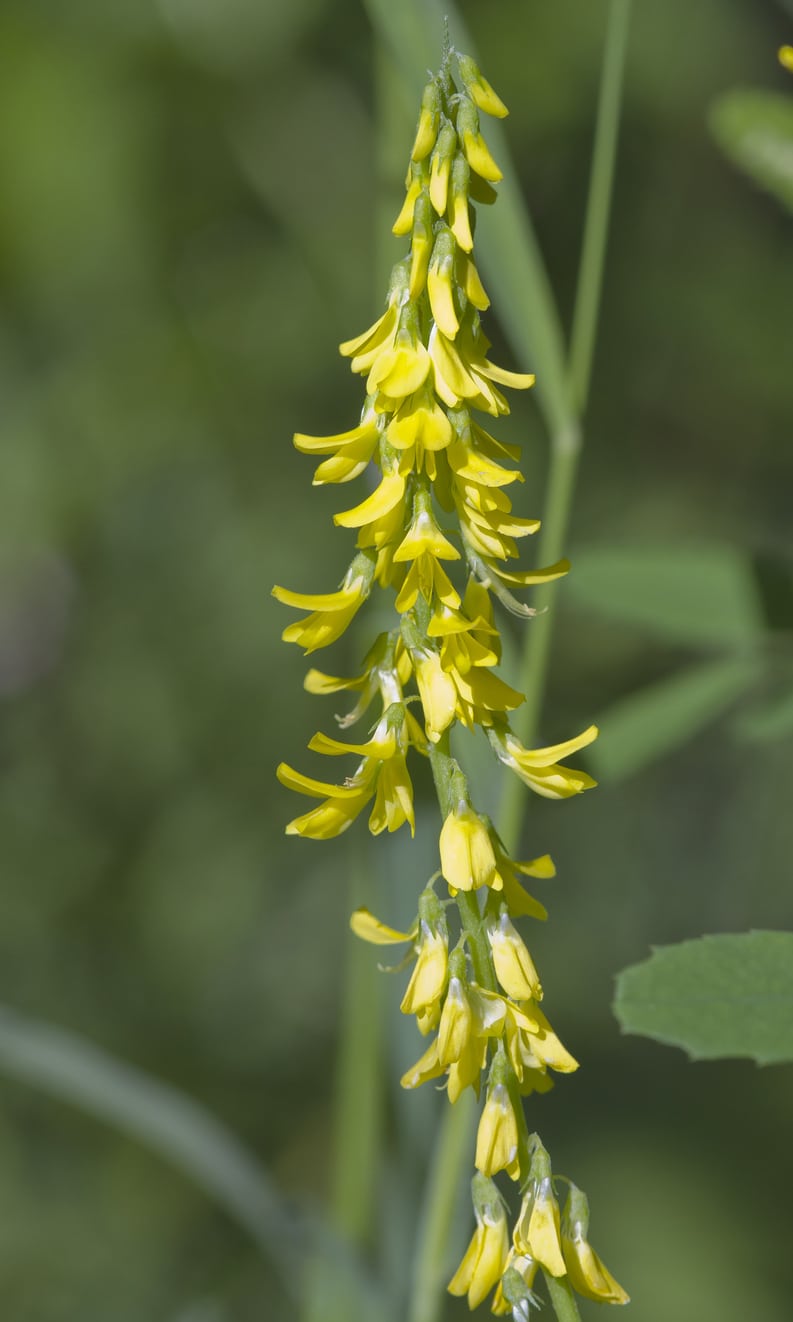Yellow Sweetclover Management – Controlling Yellow Sweetclover Plants


Yellow sweetclover (may be spelled as two words), also called ribbed melilot, is neither a true clover nor especially sweet. It is a legume plant with the scientific name Mililotus officianalis, and sometimes used as food for livestock. Is yellow sweetclover a weed? Sometimes. Read on for more information on why yellow sweetclover is considered a weed in some areas and tips on yellow sweetclover management.
What is Yellow Sweetclover?
So what is yellow sweetclover? A forage crop? Or is yellow sweetclover a weed? That all depends on your perspective. The biennial plant is a legume that grows to 6 feet (2 m.) tall and is topped by bright yellow flowers. It has coarse stems and the leaves are toothed. Yellow sweetclover is not a native plant to this country but was imported from Europe and Asia. It is used as food livestock and as hay when it is young. After the plant flowers, it becomes stemmy, which makes it problematic as hay. An even more serious problem with sweetclover is the fact that it contains the toxin coumarin. This gives the legume a bitter taste. Yellow sweetclover becomes more toxic when heated or spoiled. If eaten in this stage, it reduces an animal’s blood-clotting ability and can be lethal. That’s why controlling yellow sweetclover is important.
Why Is Yellow Sweetclover a Weed?
In many areas, yellow sweetclover is considered a weed. That’s because it spreads rapidly and often grows where it isn’t wanted, like open fields, roadways, and other disturbed sites. The seeds can remain viable for 30 years or more. There are many beneficial yellow sweetclover uses, however. This plant provides food for wildlife and also nectar for honeybees. It is also a nitrogen-fixing plant used as a cover crop and, as mentioned, works as feed for livestock. That being said, the low-level toxicants contained in the plant can be dangerous for animals, both livestock and wildlife. Feeding on moldy yellow sweetclover can cause a fatal hemorrhaging disorder.
Yellow Sweetclover Management
Yellow sweetclover plants are drought-tolerant and exceptionally cold tolerant. They propagate by seeds and produce a lot of them. If you are interested in controlling yellow sweetclover, it’s best to act before the yellow flowers bloom. Remove the plants early, before seeds are formed. This is the key to yellow sweetclover management. How to remove them? Hand pulling works well, if you don’t have acres to deal with. Mowing also works for larger areas, and controlled burns can help with controlling yellow sweetclover. What about controlling yellow sweetclover when it is mature? At this stage, you’ll have to remove the seeds. That is more difficult since the seeds are tough and durable. They resist soil fumigation as well as solarization.
Sign up for the Gardening Know How newsletter today and receive a free copy of our e-book "How to Grow Delicious Tomatoes".

Teo Spengler is a master gardener and a docent at the San Francisco Botanical Garden, where she hosts public tours. She has studied horticulture and written about nature, trees, plants, and gardening for more than two decades, following a career as an attorney and legal writer. Her extended family includes some 30 houseplants and hundreds of outdoor plants, including 250 trees, which are her main passion. Spengler currently splits her life between San Francisco and the French Basque Country, though she was raised in Alaska, giving her experience of gardening in a range of climates.